What Percentage of Horses Colic Again After Surgery
Your Guide to Colic Surgery in the Horse
By: Dr. Lydia Gray
If your horse needed emergency colic surgery to save his life, would you have all the information needed to make a conclusion rapidly? In this article, we take you through the procedure from beginning to end, explaining the difference between a "medical" colic and a "surgical" colic and how veterinarians tell the difference, sharing survival rates and complications, the average cost of colic surgery, and the typical recovery fourth dimension, and, most importantly, helping you sympathize your office in all of this and how you can make the best decisions for your horse.
The latest estimates are that v to ten% of the Usa horse population colics each year, with the vast majority (ninety to 95%) being mild cases that resolve with simple medical management and treatment on the farm. However, that still leaves approximately 5 to x% of colicky horses needing to be referred to a surgical facility and possibly undergoing surgery to correct the upshot. Why do some horses go ameliorate with the standard pain-killers, sedatives, fluids, laxatives, and lubricants (ie medical treatment) and others don't?
Medical vs Surgical Colic

Non all colics are created equal, as there'due south a lot that can and does get incorrect in the belly of the horse. By remembering that the term "colic" simply refers to abdominal hurting and not to a specific section of bowel or to a certain problem, then it makes sense that a horse showing signs of belly hurting could accept:
- ulcers in the stomach (a medical colic), or
- a strangulating obstruction in the small-scale intestine (a surgical colic), or
- an impaction in the large colon (a medical OR surgical colic), or some other problem
How does your vet know when a colic is medical and tin can be treated conservatively at dwelling house vs when a colic is surgical and must exist referred to a facility that tin perform emergency intestinal surgery? Once your vet arrives at the farm, everything he or she does – enquire questions about the contempo history, perform an examination that may include nasogastric (nose-to-stomach) intubation and rectal palpation, brainstorm treatment – provides clues as to the nature of this episode.
For example, if your equus caballus's medical history includes colic surgery a twelvemonth ago, then there's a possibility he has "adhesions," a complication of a previous abdominal surgery where sections of bowel tin stick to other sections of bowel, the body wall, or other organs, and may require a second surgery to right. Case number 2: during the exam, if a large amount of gas, liquid, or feed "reflux" comes upwards out of the tube in your horse'due south stomach, and so this could indicate a blockage in the bowel that may require surgery to correct (rectal palpation is likewise used to detect blockages including impactions, displacements, and twists). A third example is if your vet gives your horse medication for pain as part of treatment but the hurting persists or immediately returns. This could also indicate that surgery is necessary.
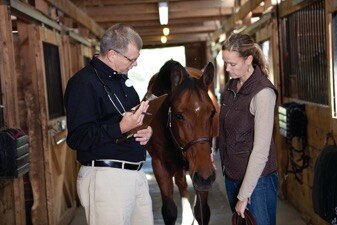
On the other hand, if the history includes contempo turnout onto lush jump grass, and then your vet will be leaning towards a simple gas colic as a diagnosis. If the middle rate is low (in the normal range of 28 to 42 beats per minute) and the gums are moist and pink during the examination, your equus caballus'southward cardiovascular status is skillful and his pain levels are likely low. And if one dose of a hurting-killer has him asking for food, passing manure, and looking to play with his buddies, chances are that the episode has passed.
Your vet may advise immediate referral to an equine infirmary for farther workup, additional medical support, or emergency abdominal surgery if:
- if there are signs of complete or partial obstacle of the bowel
- if in that location is persistent or astringent abdominal pain
- if your horse appears to be going into circulatory shock – or
- if there is a lack of response to medical treatment in general
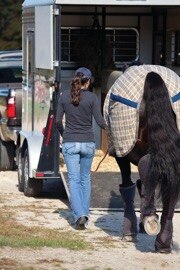
Colic Surgery Survival Rates and Post-Op Performance
Over the terminal 20 years or so, neat strides accept been made in colic surgery technique and general anesthesia safety, with a much higher percent of horses surviving and thriving after the procedure than ever earlier. According to data from Practical Guide to Equine Colic edited by Louise Southwood and published in 2013, current survival rates for colic surgery range from 80 to 95%. This number varies with the type of lesion – where information technology is, what it is, and how it was fixed– as well every bit the hospital/surgeon and fifty-fifty the role of the country. However, the greatest cistron in determining whether a horse undergoing colic surgery lives or dies is early recognition by the owner and early on referral past the veterinary to a full service equine hospital with intensive care and surgery facilities.
While many horse owners believe that older horses should not or cannot undergo colic surgery, those without health issues actually tolerate it quite well. In a 2014 presentation at the American Association of Equine Practitioners (AAEP) Almanac Convention, Dr. David Freeman shared that horses older than 16 years – fifty-fifty those in their late 20s to early on 30s –handled full general anesthesia and colic surgery well, and their postoperative survival rates were comparable to those of younger horses.
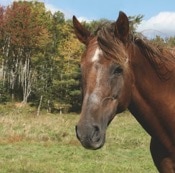
Dr. Freeman too reported that virtually horses return to their previous level of performance after colic surgery, even when this ways at the highest levels of activity and competition such equally racing, eventing, or Grand Prix dressage or bear witness jumping. Knowing that survival rates are loftier, even for older horses, and that it's very likely a horse undergoing colic surgery will bounciness back well enough to take upward where he left off in his functioning career, information technology'due south time to consider other factors involved in the decision whether or not to consent to colic surgery, such as the cost.
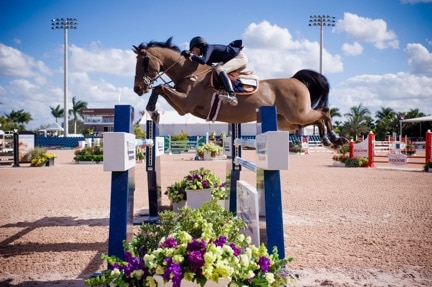
The Price of Colic Surgery
The type of colic, the severity of the condition, where in the state you're located, and other factors all weigh in to the terminal toll of colic surgery. In her book, Dr. Southwood writes that surgical management, including emergency admission plus basic postoperative intendance, at U.South. hospitals in 2012 ranged from $5,000 to $x,000. She notes that in most cases, facilities will ask for a deposit of 50% of the estimate at the time of admission. Claims filed through SmartPak'due south ColiCare™ Program into 2016 point that the average cost of colic surgery nationwide, including pre-op and post-op care, is $7,800.
Whether your horse is enrolled in a colic surgery reimbursement program like ColiCare or has insurance coverage that extends to colic surgery, owners and anyone with care, custody and command of a horse must be familiar with the terms and atmospheric condition of these programs and policies. Things to ask yourself before being faced with a life-threatening decision to make include:
- Do I have to go prior approving from the company before like-minded to colic surgery?
- Does the company pay the vet or hospital directly or practice I pay the bill and go reimbursed?
- Is at that place a deductible or co-pay and if so, how much is it?
- What things might void the agreement such as not disclosing previous colics?
- How do I submit a claim?
- When do I submit a claim? (that is, must I turn in paperwork and bills by a sure date?)
- What is the maximum payout and is there a limit per consequence or per year?
Not being able to say "yes" when the vet asks if surgery is an option is a terrible feeling, peculiarly when your equus caballus is enrolled in a reimbursement program or has an insurance policy. Salve time and anxiety subsequently by reading the fine print now and complying with all requirements.
The Surgical Process and Complications
If you lot did decide to transport your horse to a surgical facility, expect things to happen adequately quickly once you arrive, unload, and check-in. Too expect some of the same exams, such as nasogastric intubation and rectal palpation, to exist performed once again, as a alter in your horse'due south status helps the new vets determine if your horse is getting better or getting worse, in which case he may be rushed to surgery.
For horses that seem unchanged upon arrival and fairly stable, the hospital may perform boosted diagnostic tests to try and figure out what the cause of his hurting and discomfort is, such every bit bloodwork, abdominocentesis aka "belly tap," and intestinal radiography (X-rays) or ultrasound. An intravenous catheter may be placed in 1 or both jugular veins in lodge to administrate IV fluids too as to be able to administer sedatives, pain-killers, and anesthesia-inducing agents, if surgery becomes necessary.
Surgery is a tool for both treatment AND diagnosis, then horses in which a specific lesion has not been identified may be taken to surgery in an attempt to figure out why he is not responding to medical treatment. In one case the horse is placed under full general anesthesia, some hospitals take a viewing window into the surgical suite and allow owners to scout the process. Y'all may see "booties" on his hooves or covering his shoes, an endotracheal (animate) tube in his oral cavity, EKG wires and claret pressure level monitors, and a clipped and scrubbed abdomen or one that's already draped.
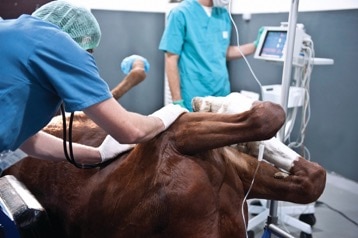
The surgery itself involves an incision into the ventral (underside) abdomen, unremarkably made along the line between the belly button and sheath/udder. Each surgeon so has his or her own systematic method of exploring the abdomen and intestine so that no lesion is overlooked or section missed. Corrections are made as necessary, such as removing impactions, decompressing gas, untwisting bowel, returning a section to its proper location, resecting (removing) a department of bowel or other. Then the body wall is closed in several layers and the equus caballus is moved to a special, padded recovery room to advisedly wake from anesthesia, later on which he is walked to a stall. Depending on how long it takes to discover and correct the lesion, colic surgery can range from one to four hours.
The about common complication of colic surgery is another episode of colic, which occurs in 25 to 35% of all horses that have undergone colic surgery. Other complications include adhesions, ileus (the absenteeism of peristalsis, the normal wave-similar movement of the intestine which propels food forward), bug with the incision area or where the 4 catheter was placed, peritonitis or inflammation of the peritoneum (the abdominal crenel), laminitis, diarrhea, and pneumonia. Some complications occur immediately, while the horse is still recovering in the infirmary (typically between 5 to x days), and some occur one time your equus caballus is back home, about often inside the first two or three months following surgery. Someone from the surgical team volition sit with you lot and review discharge instructions every bit well equally send you lot abode with a copy and make certain your regular vet also gets a re-create. Those instructions tell you non only how to care for your horse but also what to monitor and who to call if you have whatsoever questions or something doesn't seem quite right.
Colic Surgery Recovery and Aftercare
Discharge instructions usually address full general monitoring, caring for the incision, feeding, do, and medication, if any. General monitoring includes observing your horse for EDUD or Eating, Drinking, Urinating, and Defecating, also as making sure he's BAR (bright, alert, responsive), that he's regaining any weight he may have lost during this episode, and that he'southward non showing any signs of colic. The incision should be inspected daily for signs of infection such every bit belch, redness, or excess swelling, likewise every bit "dehiscence," in which the sutured edges carve up apart or gape open.
The surgical facility will take introduced your equus caballus gradually to his regular diet, feeding small meals often, and will give you clear instructions on what and how much to give at what intervals equally yous continue to restore him to full feed. Depending on what was found during surgery and what the original cause of the colic was determined to be, your horse may or may not render to his regular nutrition. For example, if an ileal impaction was discovered and his diet had been coastal Bermuda hay, the veterinarians may suggest he be switched to another type of hay that has less of a tendency to crusade an obstruction.
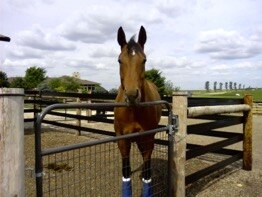
A typical timeline for do begins with four weeks of stall rest, during which time your horse can exist handwalked and handgrazed. This is followed by another 4 weeks of turnout, alone, in a stall with a pocket-sized run or paddock attached. At the stop of this threescore-24-hour interval or two-month period, if all is still going well, most horses tin be given full turnout with other horses. Calorie-free longeing and riding is usually permitted at this time, with a gradual return to full preparation at the ninety day marker.

By answering some of the virtually common questions surrounding colic surgery – when a horse needs surgery vs medical care, which factors go into making the decision for an individual horse, and what to expect during and after – hopefully some of the "mystery" will be taken out of this process leading to improved outcomes for both horses and horse owners.
SmartPak strongly encourages you to consult your veterinarian regarding specific questions about your horse's health. This information is not intended to diagnose or treat whatever disease, and is purely educational.
contrerasagrapper.blogspot.com
Source: https://www.smartpakequine.com/content/your-guide-to-colic-surgery-in-the-horse
0 Response to "What Percentage of Horses Colic Again After Surgery"
Post a Comment